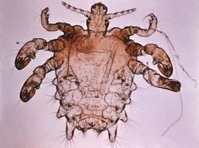IT STARTS LIKE THIS: YOU NOTICE a tiny bump. A new tiny bump. You're not sure what it is, but you know it wasn't there before. Then you wonder if maybe it's not new after all; perhaps since it was so small, you just missed it for years. Hell, maybe you were born with it. So you convince yourself to quit obsessing and forget about it for a while. Bad idea. Chances are your first instinct was right: You've got an STD. Here's how to get rid of it.
1 Call a urologist. These docs are dick specialists--unlike your regular physician. After all, this isn't the time to screw around. (That's what got you here in the first place.)
2 Pick the right guy. Preferably, someone other than the first guy you see listed in the Yellow Pages. Choose five in your area and put their names into Google, then compare. Your guy is the one with the best online cred, especially if those pages link him to a major hospital, university, or best of all, the American Urological Association.
3 Get an appointment--now. Go for distressed-sounding--but not insane--when you make the call. You get bonus points (and an earlier appointment) for using words like "sharp pain" and "very upset"
4 Tell the truth. Be as graphic as possible. Remember, no matter how perverted or weird your gallivanting has been, your doc has probably heard worse. Leaving tiny but important details out--like the color of the discharge--may result in your getting the wrong type of treatment.
5 Be prepared. First, your doctor will douse your member with something that smells like vinegar, looking for bubbles signifying the presence of warts. Then, he'll diplomatically feel you up, checking the fellas and surrounding area for unusual lumps or inflammation. Make sure you wrap your visit up with a urine sample and blood test, the only reliable way to check for herpes. If he doesn't mention either test-and some doctors won't--make sure you ask. You need both.
6 Go home. Lab work can take up to 48 hours to get back to your doctor's office. But brace yourself in the meantime. Given the number of STDs out there, chances are you have one of them, if not more. Your doctor will give you antibiotics for the curable ones (chlamydia, "trich," syphilis, or gonorrhea) or drugs to help keep the ones that are viral and last a lifetime--like herpes and HPV--under control.
PLAYING THE ODDS
Too lazy to slip on a rubber? Think again: The chances are frighteningly good that she's already infected.
ODDS SHE HAS...
HPV: 7.5/10
Herpes: 1/4
Chlamydia: 1/10
Trichomoniasis: 1/20
Gonorrhea= 1/60
HIV: 1/250
COPYRIGHT 2005 Weider Publications
COPYRIGHT 2005 Gale Group



